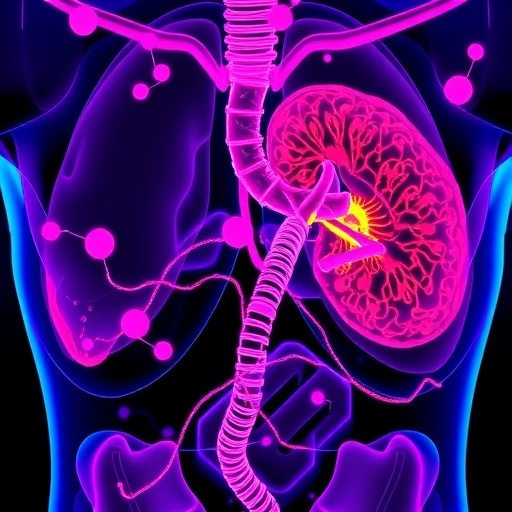
Recent research published in the journal Reproductive Sciences has illuminated the complex relationship between exercise intensity and male reproductive health, particularly focusing on sperm parameters. In a thorough investigation led by researchers Hu, Li, and Chen, the study employed a network meta-analysis approach, combing through various rodent studies to parse out the optimal exercise intensity that can enhance sperm quality. This research is particularly noteworthy as it provides new insights into how physical activity can impact male fertility, an area that has garnered increasing attention in light of growing fertility concerns globally.
The foundation of the study is rooted in a well-established but underexplored area of health science. While numerous studies have examined the benefits of exercise on overall health and well-being, the effects of different intensities of physical activity on reproductive parameters remain less elucidated. The evaluated studies ranged from mild to high-intensity exercises, and the authors synthesized an extensive amount of data to identify patterns and generate evidence-based recommendations for optimal exercise regimens aimed at improving sperm health.
One of the primary takeaways from the analysis is the bell-shaped response to exercise intensity—where moderate quantities of exercise appear to provide the most significant benefits, while both minimal and excessive exercise can detract from reproductive health. This finding is critical because it underscores the notion that not all exercise is created equal; simply engaging in physical activity does not guarantee improved sperm parameters. Instead, males seeking to improve fertility should pay specific attention to the intensity and duration of their exercise routines.
In the animal studies reviewed, the researchers meticulously categorized the responses of male rodents to differing exercise intensities. Those subjected to moderate exercise conditions showed improved sperm count, motility, and morphology compared to their sedentary counterparts and those engaged in excessively intense exercise routines. Such results suggest a physiological sweet spot exist, highlighting the potential of moderate exercise as a therapeutic strategy for improving male reproductive health.
Additionally, the study delves into the mechanisms by which exercise influences sperm quality. Regular, moderate-intensity exercise has been shown to enhance blood flow, regulate hormone levels, and improve metabolic health—all of which can contribute positively to physiological processes that govern spermatogenesis. For example, regular aerobic activity helps maintain optimal testosterone levels, which are crucial for sperm production. The intricate interplay between exercise, hormone regulation, and sperm quality will provide fertile ground for further studies.
Moreover, the research emphasizes the need for awareness regarding lifestyle choices and their ramifications on fertility. The rising prevalence of reproductive issues in men, often interconnected with sedentary lifestyles and obesity, calls for a reevaluation of daily habits. Healthcare practitioners are encouraged to consider physical activity as a vital aspect of male fertility treatment plans, integrating exercise recommendations with other therapeutic avenues.
An intriguing aspect of this research is its broader applicability not only within the realm of human health but also in wildlife and conservation efforts. Understanding reproductive health in mammals can lend insight into population dynamics and conservation strategies for endangered species, where reproductive success is integral to survival. Hence, findings from this rodent-based analysis could extend implications to a wider biological context, affecting how wildlife management practices address reproductive health.
While the study provides compelling evidence about the relationship between exercise intensity and sperm parameters, it also raises critical questions about the applicability of these findings to humans. As with any animal study, caution must be exercised when extrapolating results to human biology. Nonetheless, the fundamental physiological principles observed could provide a foundational understanding for future human studies.
In conclusion, this study by Hu and colleagues presents a robust framework for understanding the role of exercise intensity in enhancing male reproductive parameters. With obesity rates rising and corresponding declines in fertility, this research sheds light on a potentially impactful intervention—tailored exercise plans. As society moves towards more health-conscious behaviors, integrating findings from this comprehensive meta-analysis into public health messaging could empower individuals to optimize their lifestyle choices in a way that profoundly impacts their reproductive health.
This research does not merely contribute to the academic lexicon; it carries poignant implications for global reproductive health trends. As we further explore the intersections of lifestyle factors, physical activity, and fertility, future studies will undoubtedly continue to unearth valuable insights that could revolutionize the approaches we take towards enhancing male health.
The road ahead appears promising as scientists and healthcare professionals alike work to translate these findings into actionable public health strategies. By empowering men through knowledge of how to optimize their exercise practices, we can help foster a better understanding of reproductive health, ultimately working towards a future where fertility challenges are managed with informed, evidence-based solutions.
As this research gains traction within the scientific community, it is anticipated that subsequent studies will build on these findings, exploring additional factors such as dietary influences, psychological well-being, and genetic predispositions in conjunction with exercise. The multi-faceted nature of health emphasizes the necessity of a holistic approach to understanding fertility and reproduction. Moving forward, the collaboration of scientists, clinicians, and public health officials will be necessary to ensure that valuable insights evolve into practical guidelines beneficial for all.
Ultimately, this meta-analysis reinforces the idea that science continually unveils the complexities of life, and with each discovery, we enhance our grasp of the myriad ways in which lifestyle choices shape our biology. As we delve deeper into the relationship between exercise intensity and reproductive health, the potential for informative discoveries knows no bounds.
Subject of Research: The impact of exercise intensity on sperm parameters in rodent studies.
Article Title: Optimal Exercise Intensity for Enhancing Sperm Parameters: A Network Meta-Analysis of Rodent Studies.
Article References:
Hu, Y., Li, R., Chen, M. et al. Optimal Exercise Intensity for Enhancing Sperm Parameters: A Network Meta-Analysis of Rodent Studies. Reprod. Sci. 32, 2528–2539 (2025). https://doi.org/10.1007/s43032-025-01926-3
Image Credits: AI Generated
DOI: https://doi.org/10.1007/s43032-025-01926-3
Keywords: Exercise intensity, sperm parameters, rodent studies, male reproductive health, fertility.
Tags: bell-shaped response to exercise intensityevidence-based recommendations for exerciseexercise intensity and male fertilityfertility concerns and physical activityimpact of physical activity on sperm qualitymale reproductive health and exercisemoderate exercise benefits for sperm parametersnetwork meta-analysis in reproductive healthoptimal exercise intensity for male fertilityreproductive sciences journal findingsrodent studies on sperm healthsperm health improvement research




